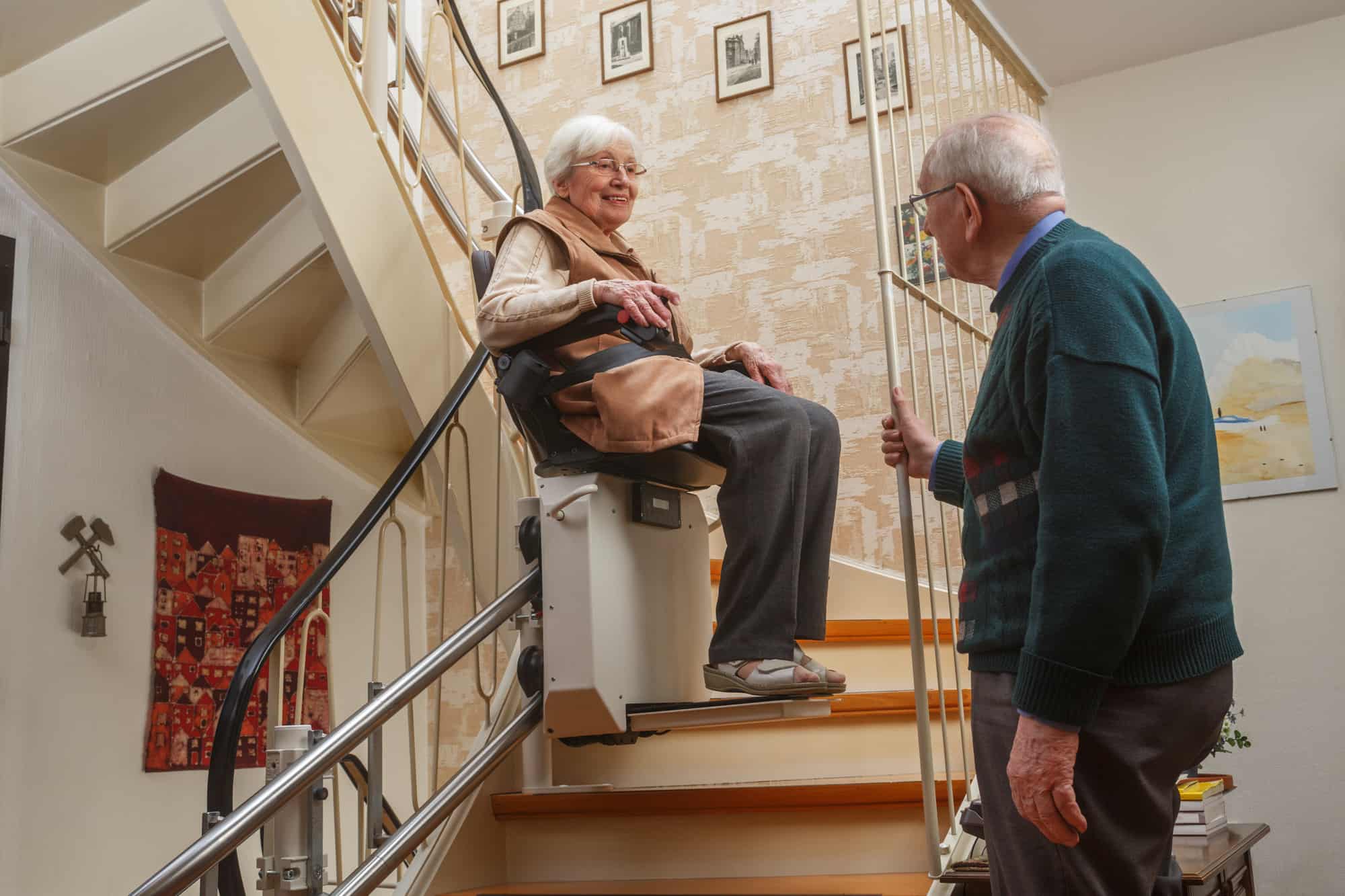Lifts
Different lifts have different purposes and with the wide range of types and functions it can be a little overwhelming. Here is a simple breakdown of hoists and lifts to help determine what will best fit your situation. In this article $ is the lowest price point available and $$$ is the highest.
Hydraulic Manual Lifts
What is it?
Manual Hydraulic Patient Lifts use hydraulic fluid to aid in the hoist mechanism and decrease in the effort required of the caregiver. It is most often used with a simple crank that is attached to a pump and needs minimal effort due to the hydraulic fluid for lifting and maneuvering.
Why Hydraulic Lifts?
These lifts are often the cheapest option compared to power and electrical lifts. They still offer mobility of patients without physical strain on the caregiver. They promote mobility while still preventing injury to the patient and caregiver during a transfer.
Price: $-$$
Power and Electric Lifts

What is it?
Electric lifts are powered with an AC electrical current or battery while power lifts use an electric motor to pump hydraulic fluid to move the lift. The lifting arm is activated by a switch that starts pumping hydraulic fluid and requires no effort from the caregiver.
Why Power/Electric Lifts?
These types of lifts require no physical exertion from the caregiver and are extremely easy to use. Some are plug-in and others are battery powered lifts that can be used in the event of a power outage. All lifts have a manual back-up option in the case of no electrical current as a safety function.
Price: $$-$$$
Car Specific/Portable Lifts
What is it?
Lifts made for cars or portable lifts in general have been an important part of keeping elders social, active, and independent. Both manual and power lifts are available in portable/car options
Why Car Specific Lifts?
Car specific lifts are permanently or temporarily attached to the car. They allow for direct transfer from chair to car seat and back out. This type of lift is usually exclusively used for transfer in and out of the car and cannot be used anywhere else.
Why Portable Lifts?
Portable lifts are lightweight lifts that can be collapsed for transport. These are helpful for moving around the house or to and from the car. The collapsable function allows for easy storage or transport. These lifts have a lower weight maximum because the lighter material used to make them are less durable.
Price: $$-$$$
Ceiling Lifts

What is it?
Ceiling lifts can be portable or fixed. Fixed ceiling lifts are installed into the ceiling and the motor is able to lift and transfer patients along a track. Portable ceiling lifts are free standing and still use a motor to lift and transfer patients along a track.
Why Ceiling Lifts?
Ceiling lifts generally take less space than other lifts, particularly the fixed ceiling lifts. This provides more room for caregivers to access the patients. Portable ceiling lifts are cheaper and more adaptable to maneuvering in several places compared to the fixed ceiling lifts which will stay where they are installed.
Price: $$-$$$
Other Lifts
In addition to the lifts listed above there are more specific categories of lifts to include heavy duty bariatric lifts (built to handle heavier patients), pool lifts, bath lifts, wheelchair lifts, and sit-to-stand lifts. Each of these options also have the manual and power options available with varying price points. Many lifts are classified as either professional grade or home version and offer different levels of aid. Generally the home versions are lower cost and more user friendly.
Prices
Prices of lifts and hoist vary depending on the dealer, manufacturer, and the type of lift. Some insurances do assist in buying and renting lifts. Many dealers also offer payment plans to pay off equipment over time. Comparing dealers and researching local equipment reuse facilities are the best way to find a budget friendly lift that meets your needs. Contact the Care Concierge team at 833-604-1354 for more information and assistance in finding a lift that meets your needs and budget.




